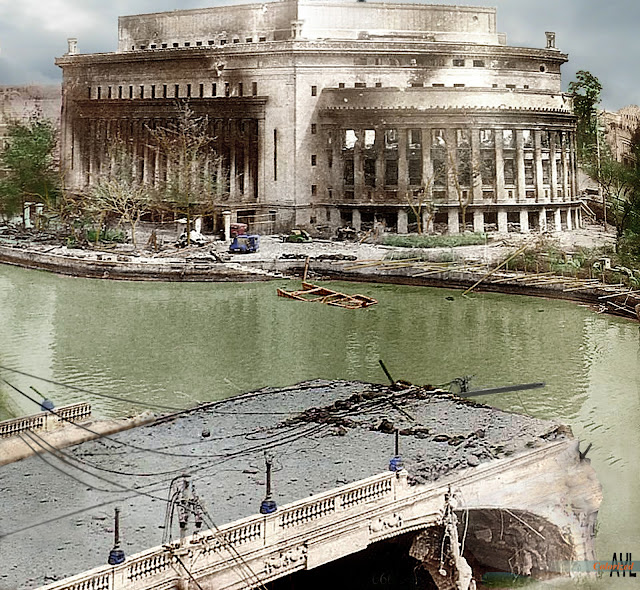Here's my colorized take on 4 photos depicting a sequence of events depicting the destruction of the LZ-129 Hindenburg over less than a minute when it attempted to land at the Lakehurst Naval Air Station in New Jersey. The photos have been taken presumably by different news photographers covering the event as it was supposed to be the Hindenburg's first scheduled round trip between Europe and the U.S. Note that the mooring tower is still a distance away from the Hindenberg but as the photographer team were waiting to welcome the airship from the tower, several photos where taken from behind it. Admittedly, they were well positioned to take a better photo composition.
There have been eyewitness accounts of the horrific tragedy. But easily the most dramatic, expressing the horror of the event, was the broadcast of radio reporter Herbert Morrison, lasting throughout the disaster from start to finish. Here were his words in the broadcast:
It's starting to rain again;
it's – the rain has slacked up a little bit.
The back motors of the ship are just holding it just, just enough to keep it from –
It burst into flames!
Get this, Charlie!
It's fire – and it's crashing! It's crashing terrible!
Oh, my, get out of the way, please!
It's burning and bursting into flames,
and the – and it's falling on the mooring-mast and all the folks agree that this is terrible, this is the worst of the worst catastrophes in the world.
[Indecipherable word(s)]
It's – it's – it's the flames,
[indecipherable, possible the word "climbing"]
oh, four- or five-hundred feet into the sky and it...
it's a terrific crash, ladies and gentlemen.
It's smoke, and it's flames now...
and the frame is crashing to the ground, not quite to the mooring-mast.
Oh, the humanity and all the passengers screaming around here. I told you, I can't even talk to people whose friends are on there.
Ah!
It's – it's – it's....
o – ohhh!
I – I can't talk, ladies and gentlemen.
Honest, it's just laying there, a mass of smoking wreckage.
Ah! And everybody can hardly breathe and talk, and the screaming.
Lady, I – I'm sorry.
Honest: I – I can hardly breathe.
I – I'm going to step inside where I cannot see it.
Charlie, that's terrible.
Ah, ah – I can't.
I, listen, folks I – I'm gonna have to stop for a minute because I've lost my voice.
This is the worst thing I've ever witnessed


















































